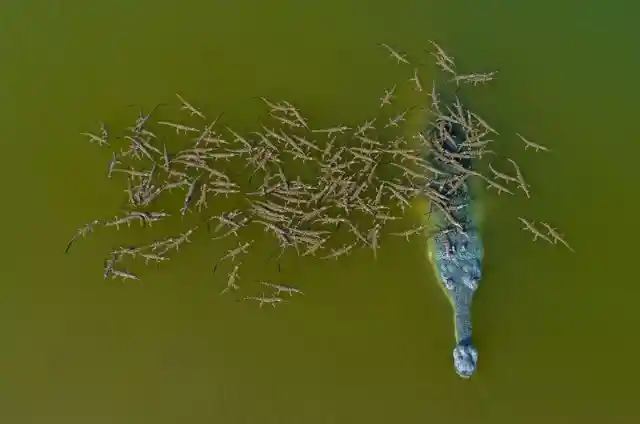
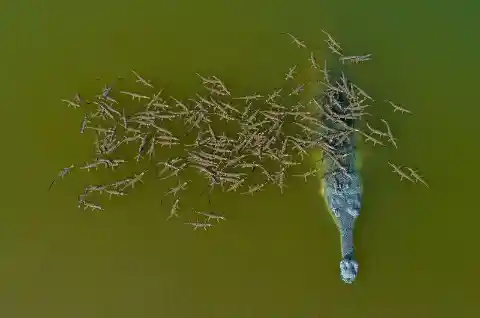
When you see a creature as intimidating as a crocodile, it’s easy to assume that they are pretty aggressive. And when you look into animal culture, you often find that their treatment of the young can be pretty spartan to say the least. However, recent images taken by Dhritiman Mukherjee at the National Chambal Gharial Wildlife Sanctuary, India, shows a pretty stark contrast to what one might expect of these powerful creatures.
Indeed, the gharial is a particular form of crocodile that is known for their incredibly long, powerful snouts. They are great for catching fish with, but the species themselves are noted as ‘critically endangered’ despite being highly common across South Asia. Sadly, it is believed that as few as 250 exist within the wild. However, Mukherjee was able to spot a gharial moving through the water himself – and noted something very interesting. It was carrying a massive collection of children with it, ensuring their safety.
A male gharial can mate with as many as nine females, and then protects all of the children that are left. The male is seen as the ultimate guardian of the young. Mukherjee knew he had found something very interesting, and so he followed the gharial for close to a week to observe how it treated the young. With hundreds of babies, the gharial certainly had its hands full!
The gharial has a special connection to their young
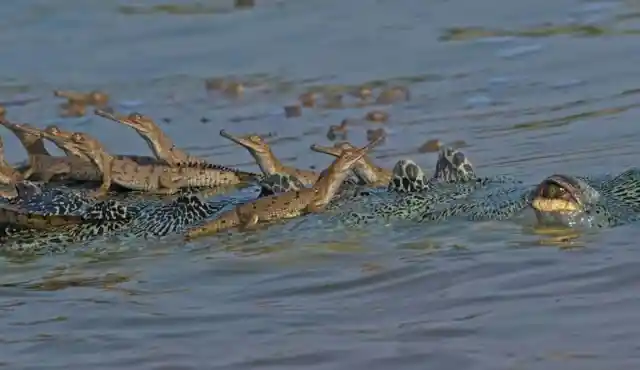
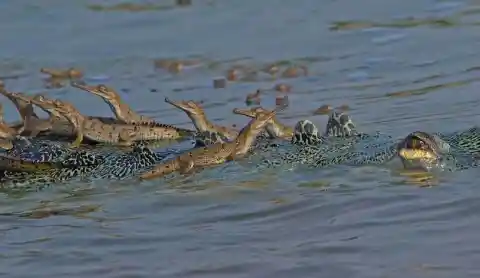
Compared to other forms of crocodile, the gharial is unable to use its snout to carry the young as many other crocodile forms can. The narrow nature of the snout ensures that, instead, the babies hop onto the back for safety. Mukherjee found that if anything even came close to the gharial that it would react with aggression, showing utter protection of the young within its care.
The photos collected are incredible, and hopefully many of the young survive so that these unique crocodiles can slowly but surely repopulate their species. These are an amazing creature to watch, as the photos show.
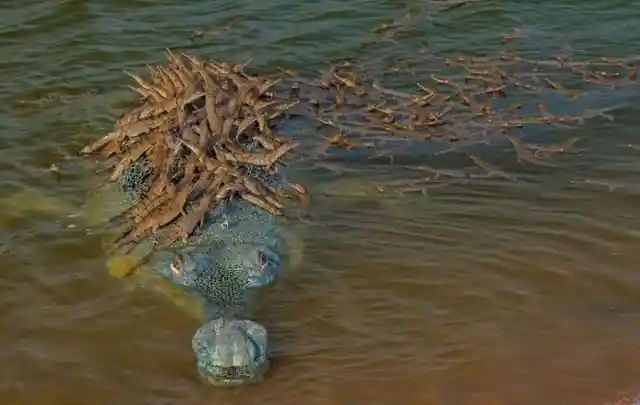
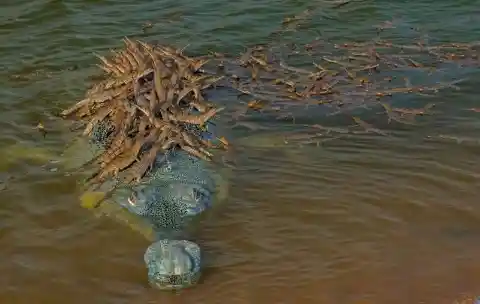
Due to overfishing, though, gharials need all of the assistance they can get as the food they usually live on is drying up in number. This means that with so many young to feed, the father gharial more or less has a perpetual mission to keep everyone fed and safe. When you see the images yourself, though, it paints a far more harmonious picture of the otherwise ferocious gharial.